Description
Overview
Melanotan I, also known as afamelanotide or MT-1, is a synthetic peptide analog of the naturally occurring alpha-melanocyte-stimulating hormone (α-MSH). Developed to mimic the body’s natural tanning process, Melanotan I is designed to stimulate melanin production in the skin, offering a sunless tanning solution and potential photoprotective benefits. It is primarily supplied as a lyophilized (freeze-dried) powder in 10 mg vials for research purposes, with a purity level of ≥99%. This product is intended strictly for in vitro laboratory research and experimentation by qualified professionals and is not approved for human or animal consumption.
Chemical Composition
- Peptide Sequence: Ser-Tyr-Ser-Nle-Glu-His-D-Phe-Arg-Trp-Gly-Lys-Pro-Val
- Molecular Formula: C78H111N21O19
- Molecular Weight: 1646.874 g/mol
- CAS Number: 75921-69-6
- PubChem CID: 16154396
- Synonyms: Afamelanotide, Scenesse, CUV1657, MT-1
Melanotan I differs from its counterpart, Melanotan II, by a single amino acid, making it a linear peptide with a focus on melanocortin receptor 1 (MC1R) activation for pigmentation effects. Its structure ensures high stability when stored properly in lyophilized form.
Mechanism of Action
Melanotan I functions as a potent, non-selective agonist of melanocortin receptors, primarily targeting MC1R, which is expressed on melanocytes, the cells responsible for producing melanin in the skin and hair. By binding to MC1R, Melanotan I stimulates melanogenesis, increasing the production of eumelanin, the pigment responsible for darker skin and hair color. This process mimics the body’s natural response to UV exposure, resulting in a photoprotective tan without the need for excessive sun exposure. Additionally, Melanotan I has shown potential in research for reducing UV-induced skin damage and promoting repair mechanisms in melanocytes.
Research Applications
Melanotan I is widely used in laboratory settings to investigate its effects on:
- Skin Pigmentation: Stimulates melanin production to achieve a sunless tan, reducing reliance on UV exposure for tanning.
- Photoprotection: Explores potential to protect skin from UV-related damage, including reducing apoptosis, hydrogen peroxide release, and DNA photoproducts in melanocytes exposed to UV radiation.
- Vitiligo Treatment: Investigates its ability to stimulate melanin production and melanocyte proliferation when combined with UVB light therapy for conditions like vitiligo, where skin loses pigmentation.
- Neuroprotection: Studies in animal models suggest Melanotan I may reduce brain damage post-stroke and improve recovery of learning and memory by enhancing synaptic plasticity and Zif268 gene expression.
- Cardiovascular Benefits: Research in rat models indicates potential to reduce injury and improve circulatory parameters following heart attack.
- Metabolic Regulation: Preliminary studies explore its effects on baseline metabolism and glucose regulation.
Benefits
- Enhanced Pigmentation: Produces a natural-looking tan in various skin types, including those with low Fitzpatrick types who struggle to tan naturally.
- UV Protection: May reduce UV-induced skin damage, offering potential photoprotective benefits.
- Neuroprotective Effects: Demonstrated in gerbil stroke models, where nanomolar doses reduced neuron death and improved cognitive recovery even when administered hours after the event.
- Vitiligo Management: Small-scale trials indicate improved melanin production and melanocyte proliferation when used with UVB therapy.
- Cardioprotective Potential: Shown to reduce injury and enhance circulatory parameters in rat models of heart attack.
Reconstitution and Storage
- Reconstitution: Melanotan I 10 mg is supplied as a lyophilized powder. For research purposes, reconstitute with 1-3 mL of bacteriostatic water to achieve desired concentration (e.g., 3.33 mg/mL with 3 mL). Use a sterile insulin syringe (29-31 gauge, 1/2″) for accurate measurement. Gently swirl to mix, avoiding vigorous shaking to maintain peptide integrity.
- Storage: Store lyophilized powder in a freezer at -20°C for long-term stability (up to 3-4 months). Reconstituted solutions should be refrigerated at 2-8°C and used within 2-4 weeks to maintain potency. Protect from light and avoid repeated freeze-thaw cycles.
Dosage Guidelines
- Typical Research Dosage: Studies often use subcutaneous injections with dosages ranging from 0.01 to 0.025 mg/kg daily to investigate tanning and photoprotective effects. For a 10 mg vial reconstituted with 2 mL bacteriostatic water, a 0.25 mg dose corresponds to approximately 7.5 units on a 100-unit insulin syringe.
- Administration: In research, Melanotan I is typically administered via subcutaneous injection into the fatty tissue (e.g., abdomen or thigh). Rotate injection sites to minimize irritation. Start with a low dose (e.g., 250 mcg) to assess response and gradually increase as needed.
- Frequency: Daily injections are common until desired pigmentation is achieved, followed by maintenance doses 1-2 times per week.
Side Effects
While Melanotan I is generally well-tolerated in controlled research settings, observed side effects include:
- Mild Reactions: Temporary facial flushing, nausea, or reduced appetite post-administration.
- Pigmentation Changes: Reversible darkening of moles and freckles.
- Uncertain Risks: Limited data exists on long-term effects, and concerns have been raised about potential melanoma risk, though no conclusive evidence links Melanotan I to increased melanoma incidence when used without excessive UV exposure.
Safety and Regulatory Information
- Intended Use: Melanotan I 10 mg is designated for in vitro research and laboratory experimentation only. It is not approved by the FDA or other regulatory bodies for human or animal consumption. Bodily introduction into humans or animals is strictly prohibited by law.
- Regulatory Status: In Europe, afamelanotide (Melanotan I) is clinically utilized under the trade name Scenesse to prevent phototoxicity in erythropoietic protoporphyria. However, unregulated versions sold online lack quality, safety, and efficacy data and may pose risks due to potential microbial contamination or dosing errors.
- Precautions: Handle only by licensed, qualified professionals. Ensure proper sterilization techniques during reconstitution and administration to avoid infection risks. Avoid use in studies involving pregnant or breastfeeding subjects due to insufficient safety data.
Packaging
- Presentation: Supplied as a 10 mg lyophilized powder in a sterile, multi-use vial.
- Purity: ≥99%, verified through independent lab testing.
Disclaimer
- This product is strictly for research purposes. Misuse or mislabeling as a drug, food, or cosmetic is prohibited.
- Unregulated products purchased may contain impurities or microbial contaminants, posing health risks. Research-grade Melanotan I should be sourced from trusted suppliers with verified purity.
Always consult in-house scientific teams, or qualified professionals for guidance on research protocols and safety.

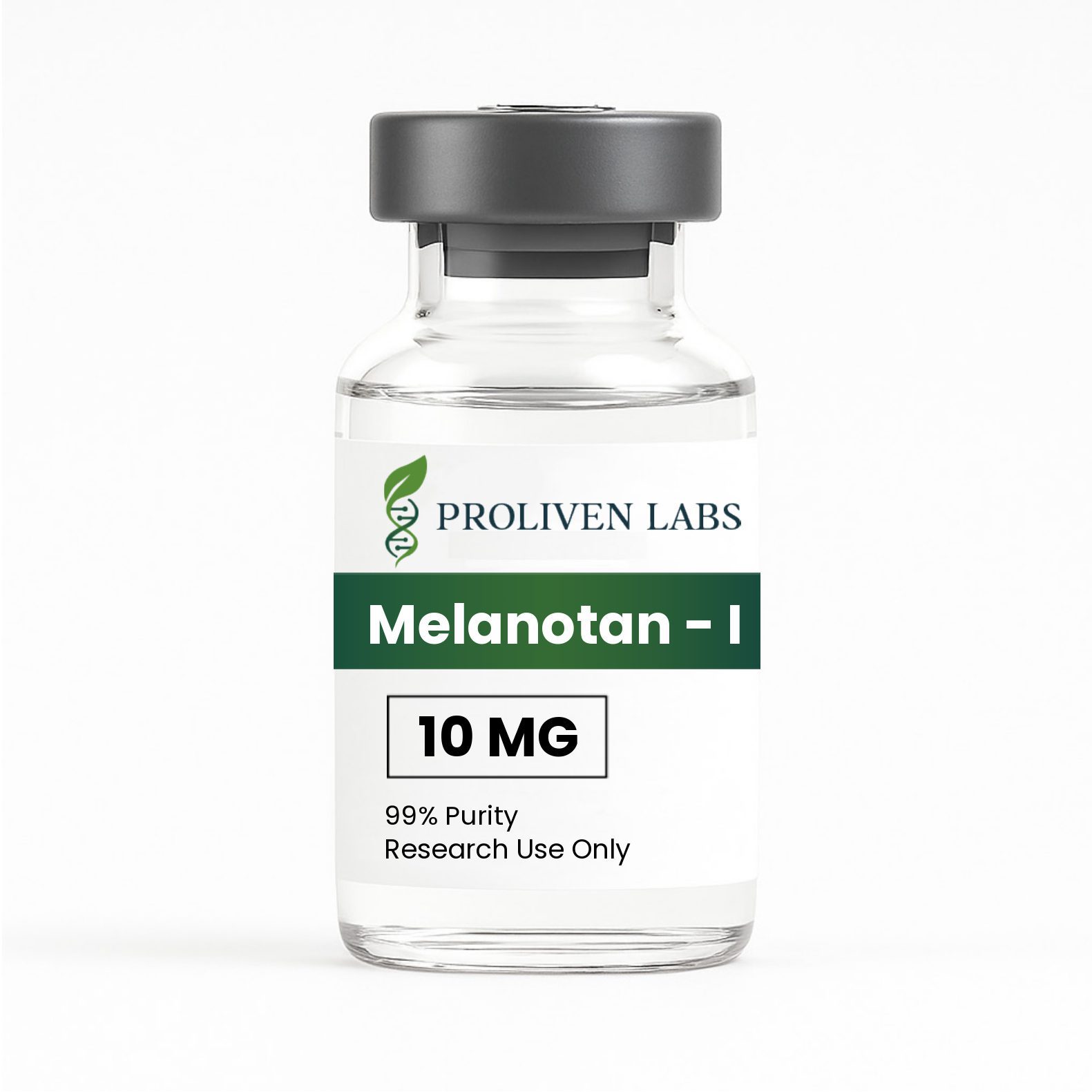
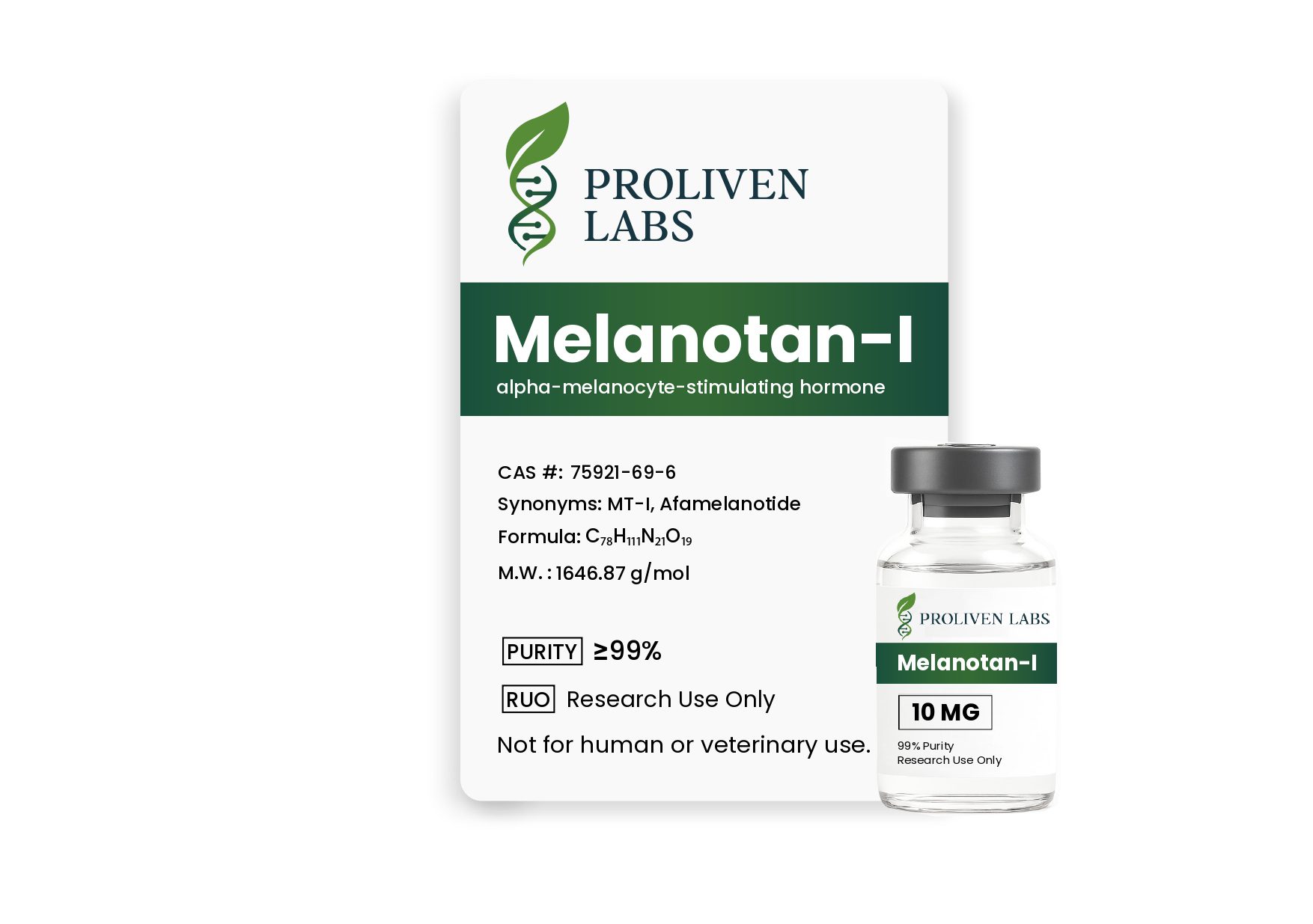
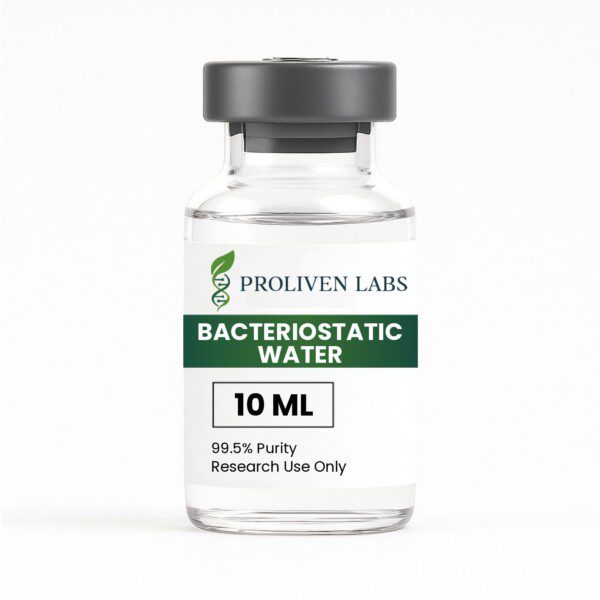
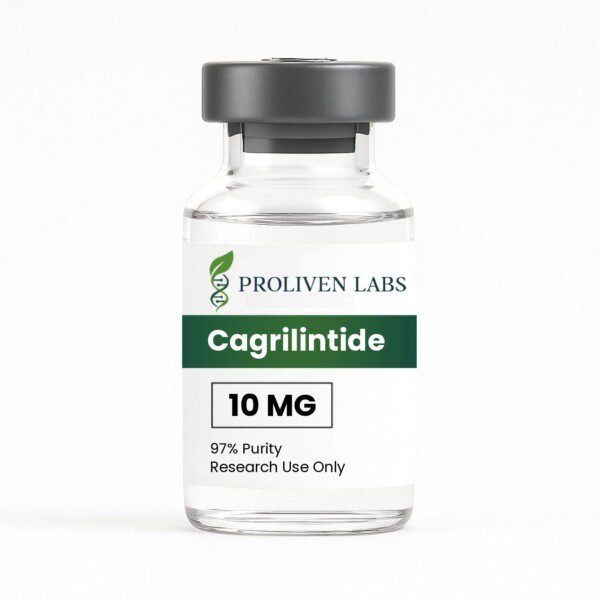
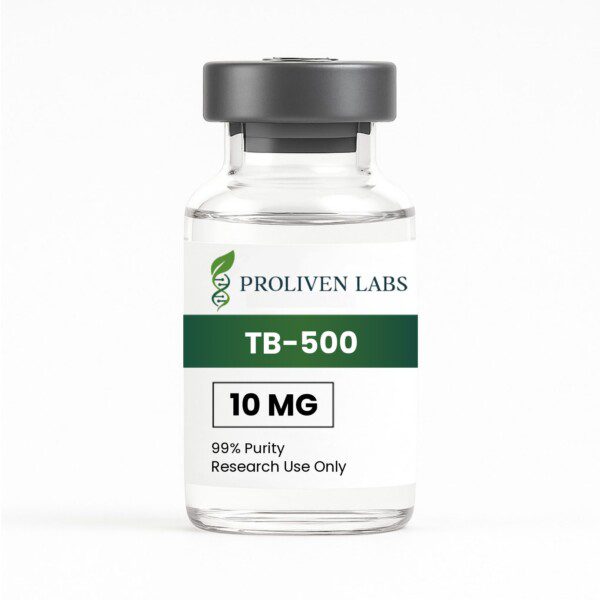
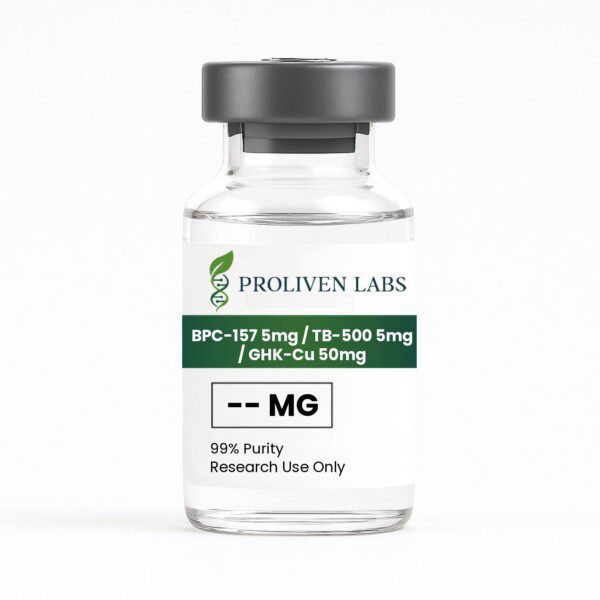
Reviews
There are no reviews yet.